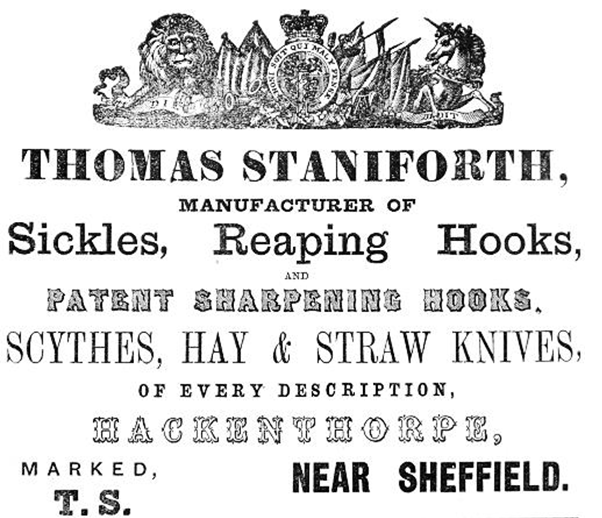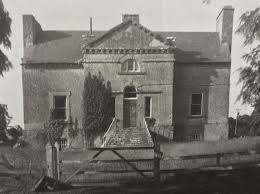
Thomas Staniforth & Co. Sickle works at Hackenthorpe.
 Gaulstown House was a country house located in Gaulstown, Westmeath, between the villages of Milltownpass and Rochfortbridge. The home was the county seat of the Rochfort family, and later the Baron Kilmaine.
Gaulstown House was a country house located in Gaulstown, Westmeath, between the villages of Milltownpass and Rochfortbridge. The home was the county seat of the Rochfort family, and later the Baron Kilmaine.
Col. James 'Prime Iron' Rochfort, Lieutenant colonel in Oliver Cromwell's army during the English Civil War was resident at Gaulstown upon his death in 1652. He challenged a Major Turner, a fellow officer to a duel which was said to have been staged at the grounds of Gaulstown House. The major was killed during the duel and Rochfort was charged with murder, and executed, days before his son Robert Rochfort was born.
Following this incident, James' wife Thomasina Pigott fled Gaulstown House to The Pale until her son Robert Rochfort renovated the house and the family re-occupied it. Robert and his wife Lady Hannah Hancock restored the home and grounds and it was described as being one of the finest houses in the county.
In 1707 Robert was appointed to the role of Chief Baron of the Irish Exchequer. This forced him to work in London for long periods. He retired as an MP and stayed with his family at Gaulstown. In 1726 he commissioned a chapel to be built on the grounds, however he passed away the following year and was unable to see the completed building.
During Robert's time at the home, Jonathan Swift was a regular visitor.
At the time of Robert's death, the home was inhabited by his son George Rochfort and his wife Lady Elizabeth Moore, along with their thirteen children and other siblings.
Upon George Rochfort's death in 1730, the home passed to his son and heir Robert Rochfort, 1st Earl of Belvedere. Robert married firstly Elizabeth Tenison, however she passed a year later, and secondly Mary Molesworth in 1736. Around 1743 he heard rumours that Mary was having an affair with his brother Arthur Rochfort. As punishment Robert imprisoned her in the home. Mary was imprisoned alone with only her servants resident in the house, by this time Robert was resident at the nearby Belvedere House. Mary remained imprisoned until Robert's death thirty-one years later in 1774.
Mary's son, George Rochfort, 2nd Earl of Belvedere gave the order to release his mother upon his fathers death, and it was said she took to wandering the house, talking to portraits. Mary briefly took up residence with her daughter Jane Rochfort, before emigrating to France where it is believed she became a Nun. George demolished the original home and built a smaller residence at the end of the 18th Century. In 1784 George sold the home to John Browne, 1st Baron Kilmaine. George Rochfort then passed away in 1814 in Dublin.
The home remained in the possession of the Baron Kilmaine's until 1918. Residents include:
The home was completely destroyed in an attack by the Irish Republican Army during the Irish War of Independence on June 4, 1920. The home had been unoccupied for two years, however it was said that the British Army had plans to occupy it.